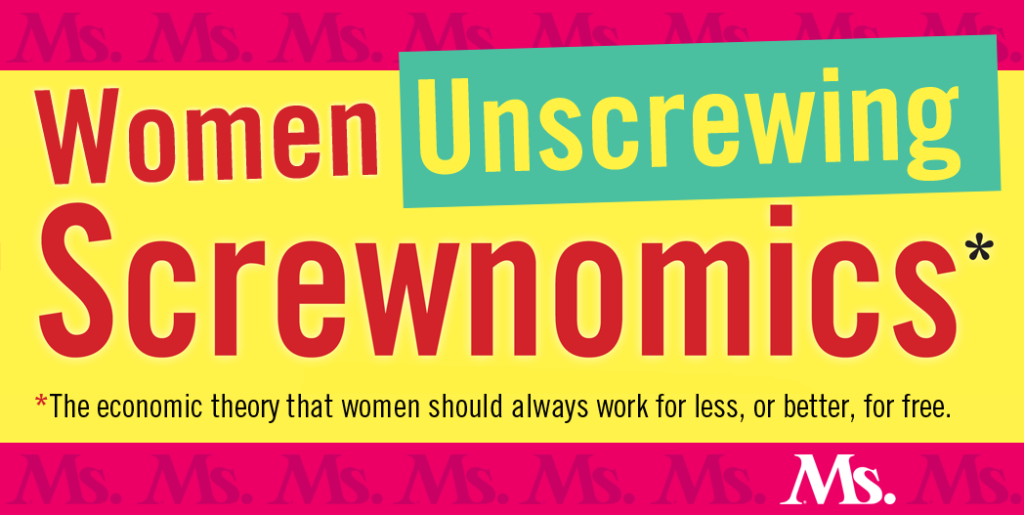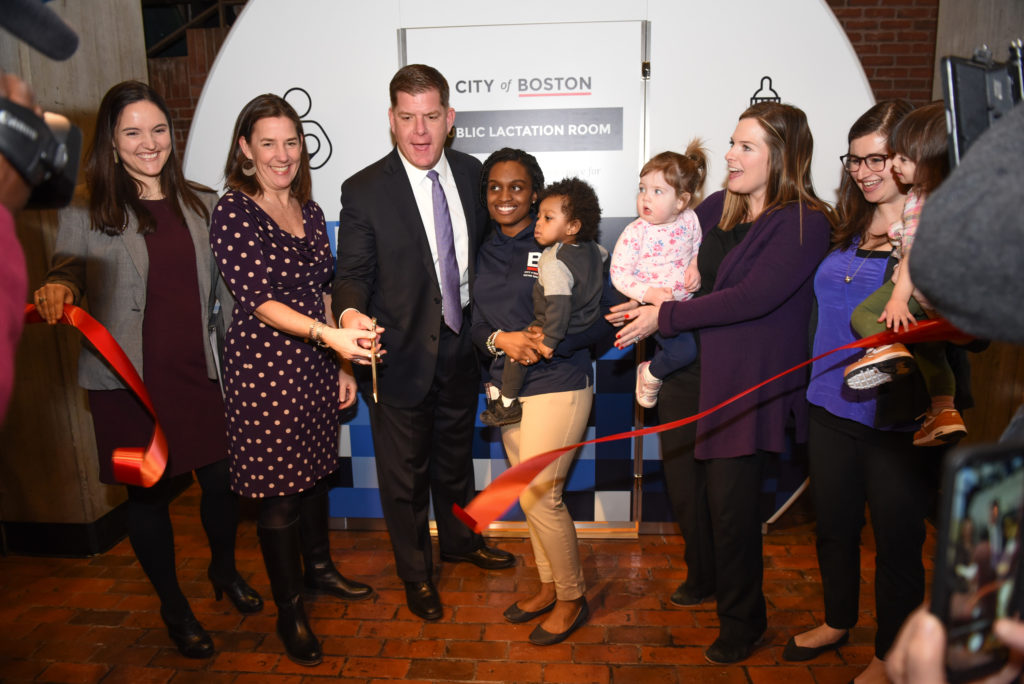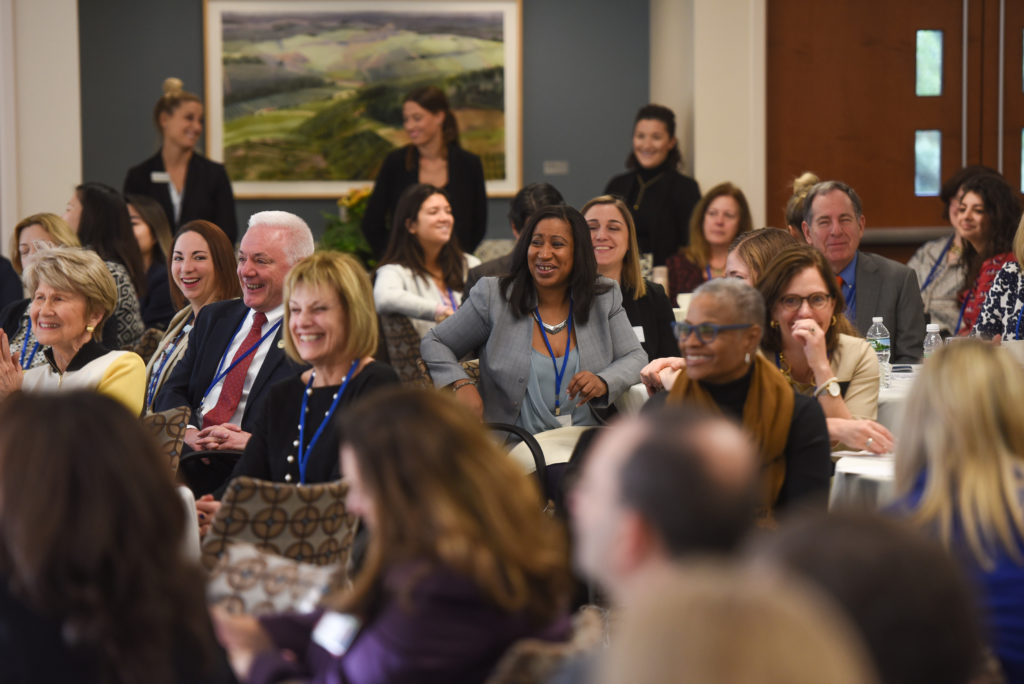
It’s time to talk about women’s economics with attitude. It’s time to laugh at what is often absurd and call out what is dangerous. By focusing on voices not typically part of mainstream man-to-man economic discourse, Women Unscrewing Screwnomics will bring you news of hopeful and practical changes and celebrate an economy waged as life—not as war.
What does an American city get when it works to address pay inequality?
If that city were to listen to the late Milton Friedman, our nation’s most influential economist even now, you could expect it to hurt women. (This is not a joke. You can watch a video and hear him argue this for yourself. You can also watch his male audience laugh as a young woman dares to differ.)
Friedman warned that government rules imposed on the free market remove a woman’s one “advantage”—his word, not mine—of working for less. It’s her only “weapon,” he says, in the “battle” he calls business. Her cheap wages enable her company to undersell competition that pays more for its men. “The cost of prejudice” soon put sexists and racists out of business, he claims. Isn’t that how you’ve seen the free market work?
But let’s look at what happens when a real city—in this case, Boston, Massachusetts—confronts the wage gap. (Spoiler Alert: No women were harmed in the production of the intervention centered on their progress.)

In 2014, Boston Mayor Martin J. Walsh created a Women’s Advancement Office, which created a Boston Women’s Workforce Council. They didn’t battle—instead, they created a safe space for women and businesses to talk about how to tap into all of the city’s talent. Research in the real world proves more diverse top management leads to more profit. They wanted to come together to figure out how to get there.
Last year, Boston Women’s Workforce Council co-chair Catherine Minehan, in a Boston Globe op-ed, asked rhetorically: “Why is it that the ‘inside male’ is always the most qualified?” She warned that women and minority leadership numbers in some fields are actually declining, making for a risk-averse echo chamber in the realm of decision-making.
“If we want to compete as a world-class city and state,” she wrote, “we need to attract the best talent.” And when only women and people of color are forced to foot the bill for “the cost of prejudice,” ultimately everyone loses.

Free market gospel preaches competition, but Boston’s women called for collaboration and learning together instead. The Office partnered with the American Association of University Women to provide free training in salary negotiation to more than 8,500 women in the city; five times a year, the Office and the Council now meet with representatives of 250 member businesses to compare notes and confide best practices.
The shared pool of stakeholders in this conversation sought each other’s advice, reflecting on successes and shortcomings together. They also gathered Boston-specific data with Boston University’s Hariri Institute—and devised ways to keep data securely anonymous while also publishing results from nearly 167,000 employees (about 16 percent of the city workforce).
Boston is a wealthy city, and it’s also an expensive one where residents are more frequently struggling to get by. The city’s average cost of living is $89,000 a year, about 48 percent higher than the national average, but its median income is only $58,000—and although the data sets from the Mayor’s Office aren’t directly comparable, their average of 76 cents for all female workers in the nation’s fifth wealthiest city didn’t even reach the 80.5 cents national average most recently revealed by the Institute for Women’s Policy Research.
“We knew there was a gender pay gap, and that we were divided by race,” Tania Del Rio, who now heads the Mayor’s Office for Women’s Advancement, said in a recent interview, “but people continue to express surprise at the size of the pay gap—with Latina women making less than half of what white men make, only 49 cents, and Black women only earning 53 cents.”
On International Women’s Day this year, Mayor Walsh invited women stakeholders to a ribbon-cutting for City Hall’s new onsite Mamava pod for working nursing moms. Women there also talked about the state’s new Equal Pay law, part of The Boston Women’s Workforce Council’s agenda for 2019.
“Businesses will have to train their Human Resources staff to remove any questions about salary history,” says Del Rio. “It’s illegal now.” The new law also provides businesses with a clear definition of “comparable work” and tools for conducting an interior “wage audit,” which will earn them a grace period for compliance.
The public-private partnership anticipates looking more closely at the additional economic impacts of occupational differences soon. “We need to focus on closing the gaps in job types and end implicit bias,” Del Rio explained, “but we also need to figure out how to make sure the pipeline to leadership isn’t leaking.”
That pipeline’s leaks often have to do with childcare. With the highest state childcare costs in the nation, at over $17,000 a year, four female Boston city councilors began monthly “Let’s Chat About Childcare” events in 2017. “I want on-site childcare for every workplace,” Councilor Michelle Wu told one reporter. “I have my two-year-old [at City Hall Day Care], which makes all the difference in the world… It makes going back to work much more possible.”
The more businesses talk together, the more they see a correlation between pay gaps and numbers of women in leadership—and the longer the conversation lasts, the more powerful their pay equity efforts become.





